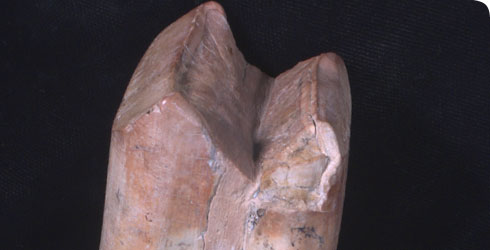Distribution and ecology
Distribution
Ground sloths are only known from North and South America and all had become extinct by the end of the last Ice Age, 10,000 to 12,000 years ago. This corresponds to the period when modern humans colonised the Americas.
The final demise of the ground sloths and the appearance of humans are very likely to be linked, though this is still a controversial issue among palaeontologists and archaeologists.
Megatherium americanum, the giant ground sloth, is known from Late Pleistocene deposits in the Pampas region of Argentina and neighbouring countries. It appears to have been one of the last species of ground sloth to die out.
Ecology
In ecological terms ground sloths fulfilled many of the same functions as elephants, rhinoceroses and horses. They specialised in feeding on very coarse, low-grade plant matter, deriving what they needed to survive by consuming huge quantities of food rather than eating anything particularly nutritious.
We are able to discover a lot about their food from large deposits of dung left by cave-dwelling species of ground sloth in both North and South America.
